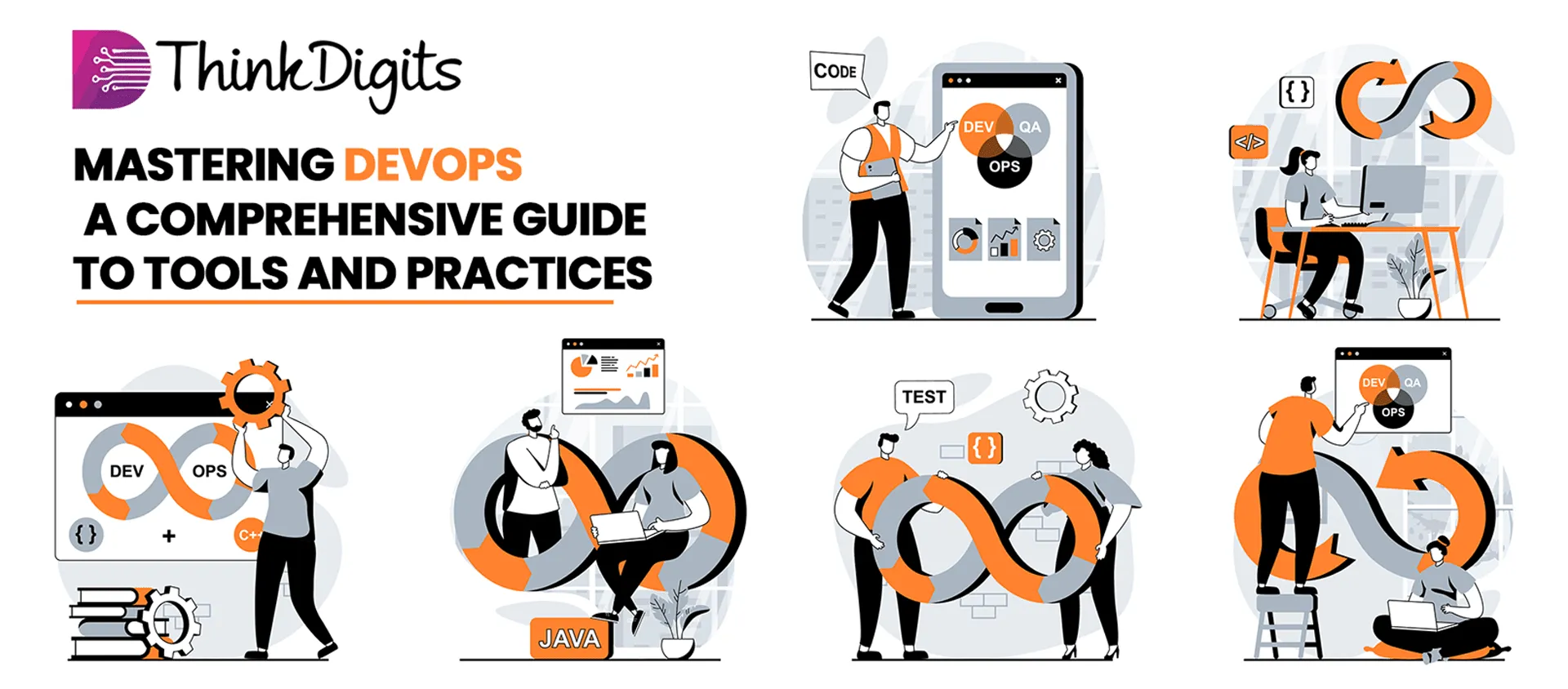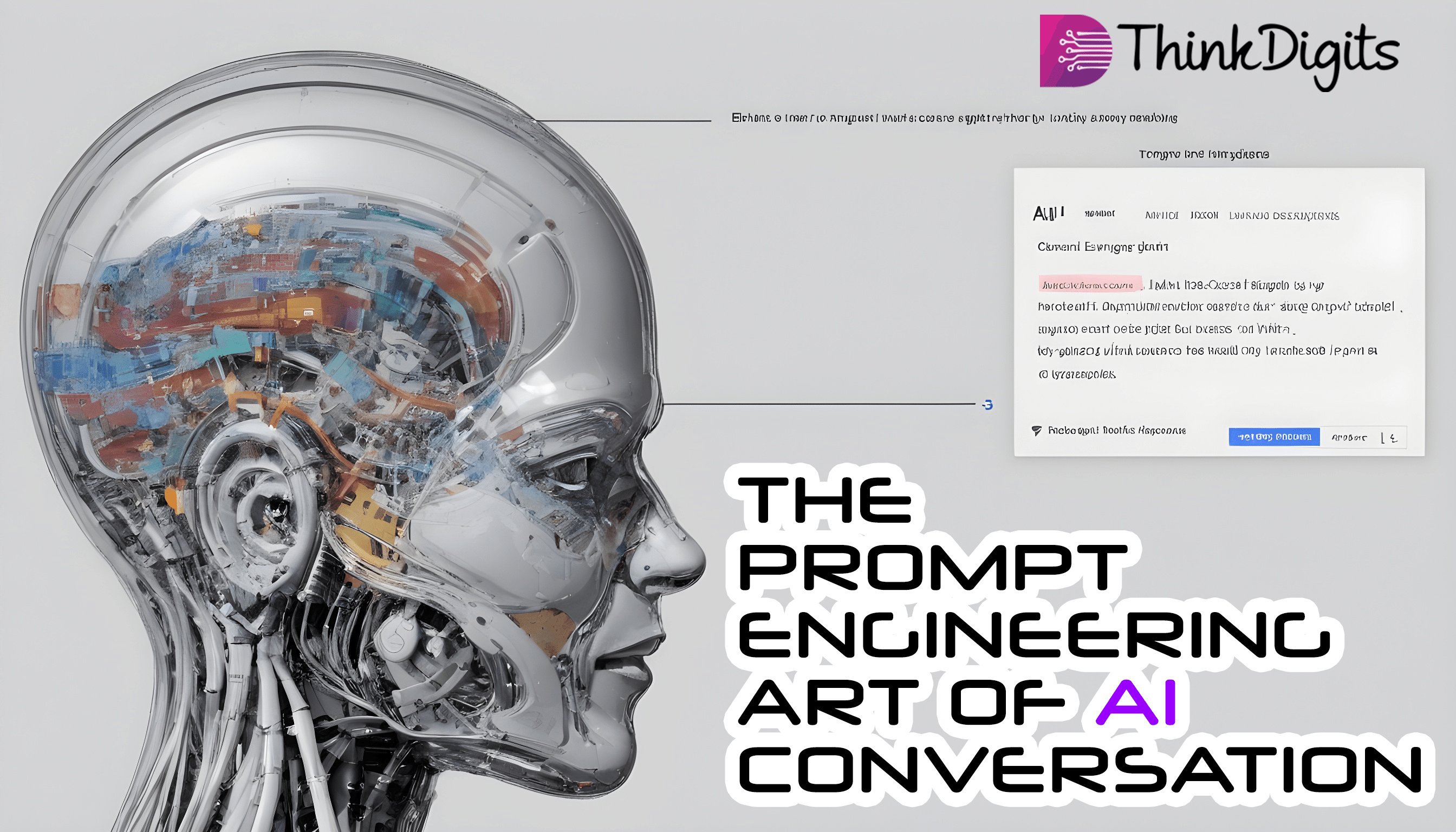The turn of the 21st century marked the onset of a technology-driven era, changing how industries operate worldwide. Among the various sectors bracing for innovation, the manufacturing industry was no exception. Today, the landscape of manufacturing is not what it used to be, courtesy of the disruptive wave of digital transformation. This digital revolution encourages industries to venture into uncharted territories, paving the way for a resilient and futuristic manufacturing ecosystem.
However, amid this digitization, one question echoes persistently – What is the role of digital transformation in building resilient manufacturing ecosystems? This article will uncover the veiled facets of this proposition. It will guide you towards understanding the essentials of a manufacturing ecosystem, perceiving the challenges within the industry, and discerning the implications of digital transformation for the sector. With illustrative success stories and future trends, the reader will gain an in-depth insight into the growing significance of integrating digital innovation within the manufacturing landscape.
Whether you are a CEO of a manufacturing firm looking to understand digital transformation or a tech enthusiast curious about its impact on various industries, this write-up will illuminate the intersections of technology and manufacturing. The journey ahead is a riveting exploration of the present and future of manufacturing under the influence of digital transformation.
Understanding the Manufacturing Ecosystem
The world of manufacturing is vast and dynamic, infinitely complex yet dazzlingly beautiful. This intricate environment, which essentially keeps our human world ticking, is referred to as the manufacturing ecosystem. To truly understand it, one must become familiar with its depths, slopes, peaks, and valleys. Buckle up for a fascinating journey as we take you through the inner workings of this marvelous system.
Definition and Components
A manufacturing ecosystem is akin to a biological ecosystem, brimming with vibrant life, each entity doing its part to keep everything in balance. Here, the ‘entities’ are manufacturers, suppliers, distributors, retailers, and even consumers. Just like in nature, an efficient and resilient manufacturing ecosystem is characterized by diversity, interdependence, and adaptation to changing conditions.
There are several key components of a manufacturing ecosystem:
- Manufacturers: The foundation of any manufacturing ecosystem, they are responsible for producing goods.
- Suppliers: Vital players in the ecosystem provide the raw materials and other resources needed for production.
- Distributors: They ensure that manufactured goods are delivered safely from manufacturers to retailers or directly to consumers.
- Retailers: The last stop in the ecosystem before the good reaches the customer, they sell the products to the final consumer.
- Consumers: The engine that fuels the entire system; they purchase and use the goods, driving the demand for more production.
“The strength and resilience of any manufacturing ecosystem are defined by the robustness of these players and their relationships,” says manufacturing thought leader James A. Tompkins.
The efficiency and effectiveness of this interconnected system are critical, especially in today’s rapidly changing business world, characterized by accelerated technological development and demand fluctuations. Understanding the operations of the manufacturing ecosystem allows businesses to adapt more quickly to changes and maintain a competitive edge in the industry.
In essence, as manufacturers, they must realize that they’re not standing alone. Rather, they’re part of a vibrant, live ecosystem- one that evolves, grows, and fluxes. The more connected and conscious they become of this, the more resilient and effective their manufacturing operations will be. Achieving this consciousness and connection- that’s the ultimate objective. Now, let’s embark on this journey of understanding and embracing the manufacturing ecosystem.
Challenges in the Manufacturing Industry
Today, the manufacturing industry faces a plethora of obstacles. From raging global competition to the growing need for enhanced productivity, these challenges constantly put the sectors to the test. Moreover, the nuances of supply chain management also pose significant hurdles.
Let’s delve into these issues one by one.
1. Global Competition
In the era of globalization, no industry is immune from international competition – and manufacturing is no exception. Thanks to advancements in technology and logistics, companies can source materials and produce goods almost anywhere in the world. This opens the door to competitors from emerging economies who can often manufacture products at far lower costs. Here are a few distinct outcomes of this stifling competition:
- It forces domestic companies to be on their toes, finding creative ways to stay in the game.
- More choices for consumers in terms of cost and quality.
- It has led to a continuous quest for upgrading technology and adopting innovative production methods.
2. Productivity and Efficiency
Improving productivity and efficiency is a perpetual challenge in manufacturing. The sector is under constant pressure to produce more, with better quality, and at a lower cost. Today, manufacturers are focusing on:
- Deploying advanced robotics and automation for highly repetitive tasks.
- Adopting Lean Manufacturing methodology to reduce waste and improve efficiency.
- Upgrading their systems with the latest software for data-driven decision-making.
3. Supply Chain Management
Finally, let’s focus on one of the most fundamental concerns of this industry: supply chain management. This involves sourcing raw materials, coordinating with suppliers, overseeing production, managing warehouses, and ensuring timely delivery to customers. A slight misstep at any stage can lead to delays and cost overruns – not to mention unsatisfied customers. For effective supply chain management, manufacturers need to:
- Maintain strong relationships with reliable suppliers.
- Implement real-time tracking systems for their inventory.
- Leverage forecast models for production planning.
Indeed, these challenges in the manufacturing industry are substantial, but tackling them effectively is crucial for this sector’s long-term success. As the industry embraces technological solutions and strategizes efficient methods, it continues to thread forward powerfully amidst these challenges. This is the invincible spirit of manufacturing, where resilience is more than just a buzzword; it is a way of life.
Digital Transformation in Manufacturing
1. Definition and Importance
Digital transformation in manufacturing represents a profound shift in the industry towards technology-driven methodologies. It’s a vibrant and indisputable move away from traditional, manual, and often labor-intensive processes, focusing more on leveraging digital tools and technologies to streamline operations. In light of rapid technological advancements, this transformation has emerged as a strategic necessity rather than an option.
The significance of digital transformation in manufacturing cannot be overstated. Here’s why:
- Enhanced productivity and efficiency: Digital transformation boosts production rate and operational efficiency. By minimizing manual processes and errors, these technologies enable companies to achieve higher productivity.
- Improved quality control: The use of digital technologies allows businesses to manage quality control with greater precision, ultimately leading to superior products.
- Competitive advantage: Companies that embrace digital transformation are better positioned to adapt to market changes, meet customer demands, and outpace competitors.
2. Integration of IoT and AI
Among the digital technologies powering the manufacturing industry’s transformation, IoT (Internet of Things) and AI (Artificial Intelligence) hold pivotal roles. IoT connects machines, devices, and people to turn manufacturing into a more collaborative and adaptive process. Through IoT, manufacturers can remotely monitor and control operations, optimize production schedules, and maintain equipment proactively, thus enhancing overall profitability.
On the other hand, AI offers manufacturers predictive capabilities. By analyzing extensive datasets acquired from IoT devices, AI can forecast machinery breakdowns before they occur or predict the future demand for a product. Consequently, manufacturers can make proactive decisions and optimize operations—with minimal downtime and reduced waste.
3. Automation and Robotics
Automation and robotics are at the heart of digital transformation in manufacturing. Robots, intelligent machines, and automated systems are taking over much of the physical labor previously performed by humans. This transition brings numerous benefits, such as reduced production costs, increased safety standards, and a nimbler, more responsive manufacturing system.
At the same time, automation is driving a greater demand for skilled workforce. As manufacturers continue to automate, the need for workers who can program, monitor, and maintain these systems is growing. For this reason, education and reskilling programs are crucial parts of the digital transformation narrative.
Digital transformation in manufacturing is no longer a futuristic concept—it’s happening now. Its integration offers a myriad of opportunities for improved productivity, efficiency, and competitiveness. By embracing these changes, manufacturers can stay at the forefront of the industry, ready to meet the demands of the digital age.
Benefits of Digital Transformation in Manufacturing
Ever wondered how digital transformation could revolutionize the manufacturing industry? Let’s explore the advantages this tech-driven shift brings, including improved operational efficiency, significantly enhanced product quality, and optimized supply chain management.
1. Improved Operational Efficiency
Imagine the potential growth your business could experience with streamlined operations. Digital transformation leverages advanced technology like artificial intelligence (AI) and Internet of Things (IoT) devices to automate routine tasks. This enables machines and systems to communicate and synchronize tasks seamlessly.
- Efficient production cycles and reduced labor costs are just a few benefits of smart machinery.
- Enhanced asset tracking allows for real-time status updates, leading to improved time management.
- Reduction in downtime thanks to predictive maintenance and instant alerts on system malfunctions.
2. Enhanced Product Quality
Striding into the digital age isn’t just about speed; it’s also all about quality. Digital transformation in manufacturing ensures higher quality products and less wastage. This directly impacts customer satisfaction and boosts brand reputation.
- Through real-time monitoring and smart algorithms, manufacturers can instantly detect anomalies and rectify them.
- Advanced simulation tools allow for rigorous quality testing in virtual environments before actual production, leading to fewer product recalls.
- The implementation of IoT devices ensures consistency across all manufacturing stages, thus improving overall product quality.
3. Optimized Supply Chain
In a global economy, having an optimized supply chain is paramount. With digital transformation, manufacturers can integrate their supply chains, making them more flexible to market dynamics and ensuring timely delivery of products.
- Enhanced visibility and advanced insights into the supply chain help in proactive decision-making.
- Automation of supply chain processes eliminates manual errors and improves order accuracy.
- Digital inventory management leads to real-time inventory tracking and efficient stock management.
In a nutshell, embracing digital transformation in manufacturing not only increases competitiveness but also provides a strategic edge. For the pioneers in this revolution, the benefits are truly copious, ranging from improved operational efficiency to a seamless supply chain. Indubitably, the digital wave is shaping a new dawn for the manufacturing industry.
Successful Examples of Digital Transformation in Manufacturing
The manufacturing industry has been notably resistant to change over the years. However, the rapid advancement of technology and the onset of Industry 4.0, characterized by interconnectivity, automation, machine learning, and real-time data, have started to reshape the way the sector operates. Traditional factories are gradually making way for ‘smart factories,’ underpinned by digital transformation initiatives.
Today, a growing number of manufacturers are harnessing the opportunities offered by digital transformation to achieve improved operational efficiency, enhance customer service, streamline supply chain management, and secure a competitive edge in an increasingly saturated marketplace. Let’s look at some real-life examples illustrating this change:
The manufacturing industry has been notably resistant to change over the years. However, the rapid advancement of technology and the onset of Industry 4.0, characterized by interconnectivity, automation, machine learning, and real-time data, have started to reshape the way the sector operates. Traditional factories are gradually making way for ‘smart factories,’ underpinned by digital transformation initiatives.
Today, a growing number of manufacturers are harnessing the opportunities offered by digital transformation to achieve improved operational efficiency, enhance customer service, streamline supply chain management, and secure a competitive edge in an increasingly saturated marketplace. Let’s look at some real-life examples illustrating this change:
- Example 1: General Electric (GE)
GE is a clear pioneer in the digital manufacturing sphere. The industrial giant has developed and implemented its own Internet of Things (IoT) platform, dubbed Predix. Predix allows the collection and analysis of industrial data, helping GE monitor and optimize its manufacturing processes, increase productivity, reduce costs, and even predict equipment failures before they happen.
- Example 2: Siemens AG
Siemens has embraced Industry 4.0 by focusing on the development and application of digital twins – virtual replicas of physical assets. Utilizing this technology, Siemens can simulate, predict, and optimize product performance across its entirety, making adjustments and refinements in the virtual sphere before they’re implemented in reality.
- Example 3: Airbus
Airbus, the European Aerospace giant, has been on its digital transformation journey for quite some time now. The company is maximizing the use of virtual reality (VR) to train its staff, test new design concepts, and improve its processes. This not only accelerates production but also significantly reduces the margin of error.
These successful examples illustrate the power and potential of digital transformation within the manufacturing landscape. Each company, armed with technology, has turned to data-driven decision-making, predictive analytics, and immersive training methods. Thus, they have successfully adapted their systems and processes to meet the demands of Industry 4.0 and beyond. Moreover, they have set forth strategic models for other manufacturers to follow and embrace digital transformation successfully.
While the path to digital transformation varies from one manufacturer to another, one thing is clear: adopting and investing in pertinent digital technologies is no longer an option but a prerequisite for surviving and thriving in today’s rapidly evolving manufacturing landscape.
Remember, digital transformation isn’t all about deploying technologies; it’s about harnessing them effectively to drive business growth, operational efficiency, and customer satisfaction. Technologies will keep advancing, but the manufacturers of tomorrow will be those who best know how to leverage these technological advancements today.
Key Considerations for Implementing Digital Transformation
Digital transformation, also known as ‘Industry 4.0’, offers many exciting opportunities for businesses. From streamlining operations to enhancing customer experiences, it can foster an entirely new era of growth and innovation. However, implementing a successful digital transformation strategy could be challenging. It requires careful consideration and planning. This article focuses on three key areas of consideration when implementing digital transformation: Identifying Business Needs, Building a Digital Culture, and Ensuring Data Security. These elements are fundamental to achieving a successful transformation.
1. Identifying Business Needs
It’s crucial to start with an accurate understanding of your business needs. Before jumping onto the digital bandwagon, ask yourself:
- Why are you considering digital transformation?
- What challenges are you facing in your current setup?
- Where can technology make a significant impact?
The answers to these questions will give you a clear picture of your ‘why,’ the primary motivator for your digital transformation journey. The right technology solution won’t make much difference if it doesn’t address your business needs, so take the time to identify what those are. An accurate understanding of your business realities can help you make informed decisions and choose the correct path for your digital transformation journey.
2. Building a Digital Culture
Digital transformation is not just about technology; it’s fundamentally about people. It’s critical to nurture a digital culture within your organization for a successful transformation. This involves embracing a culture of innovation and fostering an environment that encourages learning and exploring new possibilities.
- Educate your employees about digital trends and tools.
- Provide training to ensure they can use the new technologies effectively.
- Create an environment where new ideas are welcomed and encouraged.
Remember, people are resistant to change, so it’s essential to manage this change delicately. When your employees feel involved and see the benefits of these changes, it facilitates smoother implementation.
3. Ensuring Data Security
While digital transformation opens up unlimited possibilities, it also comes with risks. One primary concern is data security. With the increasing digitization of business processes, organizations are more vulnerable to cyber threats.
- Make sure to invest in robust security systems and tools.
- Conduct frequent security audits to detect any potential vulnerabilities.
- Educate your employees about best practices for data safety.
Data is the new oil; hence, ensuring its security should be a top priority. Remember, a successful digital transformation isn’t just about implementing new technologies but also about safeguarding your business and your customers from potential data breaches.
Looking at these considerations, it’s clear that digital transformation is a multifaceted process that requires strategic planning and execution. Mastery in identifying business needs, cultivating a digital culture, and securing data will pave the way for a successful shift to digital, enabling your business to harness the immense benefits that digital transformation has to offer.
Future Trends in Digital Transformation in Manufacturing
The manufacturing industry is continually evolving in response to technological advancements and consumer demands. Over the past few decades, one trend has dramatically transformed the field: digital transformation. This phenomenon has not only reshaped manufacturing processes but also revolutionized the entire supply chain, from product conceptualization to after-sales service. Let’s delve into the emerging trends in digital transformation that are expected to shape the future of the manufacturing industry, including smart manufacturing, predictive analytics, and blockchain technology.
1. Smart Manufacturing
The buzz around smart manufacturing is growing louder. This trend leverages the power of advanced data analytics and artificial intelligence to make manufacturing processes more efficient, cost-effective, and agile. Imagine manufacturing units that could self-optimize, self-adapt, and self-learn. This is not wishful thinking; it’s smart manufacturing.
Various factors contribute to the rise of smart manufacturing:
- The increasing availability of data and superior analytics capabilities
- The decreasing costs of Internet of things (IoT) devices
- Advances in artificial intelligence, robotics, and automation
2. Predictive Analytics
Predictive analytics is another significant trend shaping the future of the manufacturing industry. This method uses historical and current data to foresee future events, trends, or behaviors, making it a critical element of proactive decision-making in manufacturing. Essential components, machinery, and entire production lines can be monitored in real-time to predict and prevent failures before they happen. The result? Enhanced efficiency, minimized downtime, and substantial cost savings.
3. Blockchain Technology
Although often associated with cryptocurrencies, blockchain technology has potential applications far beyond finance. In manufacturing, blockchain presents an opportunity to create more transparent, secure, and efficient supply chains. It allows manufacturers to track materials, products, and transactions at any point of the supply chain, fostering greater trust and collaboration across all stakeholders.
These are just a few promising digital transformation trends set to revolutionize the manufacturing industry. The industry’s future will be data-driven, automated, and highly connected as it strides into the era of smart manufacturing, predictive analytics, and blockchain technology. As we look forward, it’s imperative that manufacturers stay abreast of these trends and strategically implement them to maintain competitiveness in an increasingly digital industrial landscape.
Conclusion
Embracing digital transformation is no longer a luxury; instead, it has become a need for survival in the intensifying competitive landscape of the manufacturing industry. Manufacturers who recognize this shift and align their strategies accordingly will be poised to endure and thrive in the ever-evolving global market.
Optimal integration of AI and IoT, proactive adoption of automation, and application of predictive analytics are just a few key aspects of the digital transformation recipe promising robust growth and success. Essentially, digital transformation in manufacturing has the incredible potential to build resilient manufacturing ecosystems that are efficient, productive, and agile.
For any organization looking to embark on its digital transformation journey, you must partner with a provider who understands and serves your unique requirements. ThinkDigits, with its AI/ML services, IoT solutions, digital twins, and advanced analytics, is poised to provide comprehensive services to help you successfully navigate your digital transformation journey.
With foresight and strategic planning, the future of manufacturing looks promising, tech-driven, and growth-centric. The digitized, interconnected factories of the future are no longer a mere concept but an evolving reality shaping the backbone of the world economy. The digital transformation will continue to redefine the traditional boundaries in the manufacturing ecosystem, making it more compelling than ever for manufacturers to stay ahead of the curve



